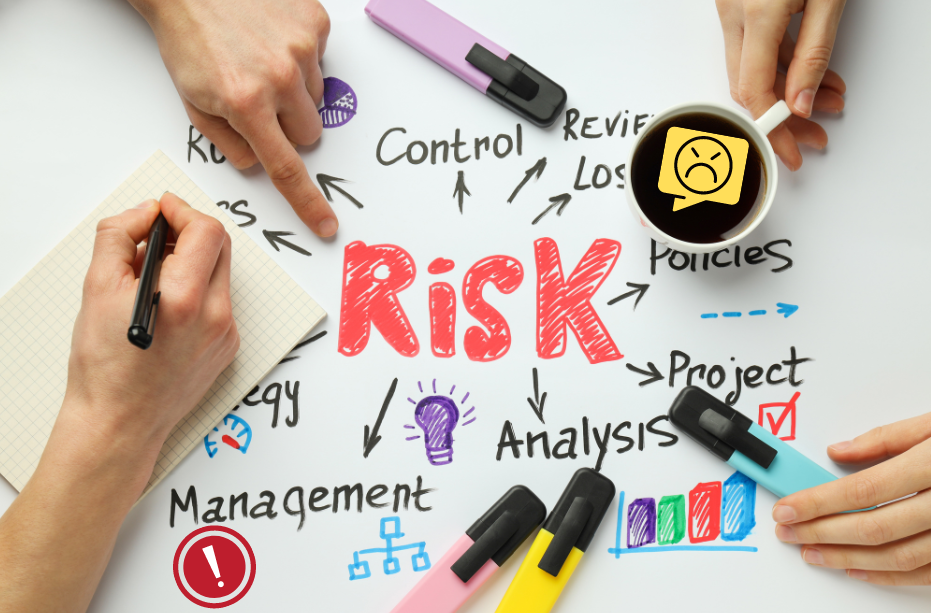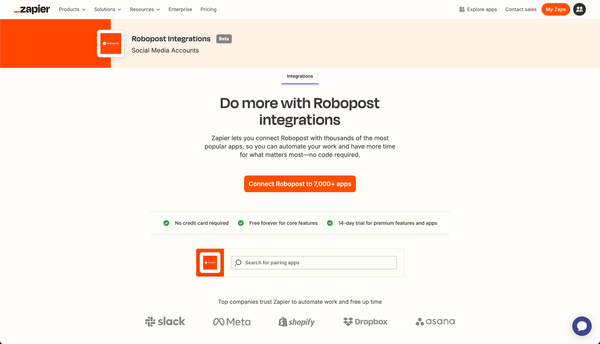Social Media Crisis Management: Preparing Your Brand for the Unexpected
Handle brand crises effectively with our guide on proactive social media strategies and effective communication for rebuilding your reputation.

In the fast-moving world of social media, a crisis can happen quickly, leaving brands open to rapid escalation and public criticism. Effective social media crisis management is crucial for preparing a brand to deal with unexpected situations swiftly and with strength. This article explores strategies and practices that can assist organizations in reducing risks, staying in control of the story, and coming out of crises with their reputation unharmed.
Key Takeaways
- Create a crisis management team that knows the company well and can make quick decisions.
- Make a detailed crisis communication plan with social media guidelines and strategies for fast responses.
- Keep an eye on social media for problems and correct any false information quickly to stay in charge of the story.
- Review customer feedback after a crisis to learn and improve for next time, rebuilding trust in the brand.
Establishing a Proactive Social Media Defense
Creating a Specialized Crisis Management Team
In social media, forming a specialized crisis management team is needed. This team, made up of experts in communication, law, finance, and operations, is vital for a quick and effective response to unexpected events.
The team's structure is important, with specific roles like:
- Communications Lead: Manages messaging and media.
- Legal Advisor: Gives legal advice.
- Financial Analyst: Evaluates financial impact and resources.
- Operations Coordinator: Ensures business continues smoothly.
Assigning roles clearly and ensuring everyone knows their duties is key. It's not just about having a plan but making sure the team can execute it well.
Regular practice drills with different crisis scenarios are also vital. They help the team prepare for challenges and improve their response strategies. This proactive approach can significantly speed up crisis resolution when it happens.
Developing a Crisis Communication Plan
A solid crisis communication plan is crucial for any brand's defense strategy. It should include clear communication channels, key messages, and roles for designated spokespersons. Transparency and accountability build trust, so your plan should explain how the brand will address issues and communicate solutions.
Here are the steps for creating a crisis communication plan:
- Form a crisis communication team.
- Identify potential crisis scenarios.
- Set up communication channels and rules.
- Choose spokespersons and define their roles.
- Develop key messages for different scenarios.
- Create a process for handling severe crises.
The plan's effectiveness depends on its flexibility and clear guidelines for interacting with stakeholders. Making sure every team member knows their role is essential for a quick and organized response.
Implementing Real-Time Monitoring and Response Protocols
Monitoring in real time is crucial for effective crisis management. By staying alert on social media and news platforms, brands can catch emerging issues before they become big problems. Automated tools are key here, offering features like sentiment analysis to understand public opinion and AI-driven chatbots to handle initial inquiries.
The response plan needs to be quick and organized. Here's a typical process:
- Immediately notify the crisis management team using established communication channels.
- Gather all relevant information to assess the situation.
- Activate the needed resources and personnel to deal with the crisis.
It's important to strike a balance between speed and accuracy in your responses, ensuring that the information you share is both timely and reliable.
After the crisis, it's crucial to review what happened. This debriefing should focus on the results and find ways to improve for future crises, making sure the team is always ready for whatever comes next.
Strategic Communication During a Crisis
Crafting Transparent and Authentic Messaging
During a social media crisis, it's crucial to be open and honest in your communication. Addressing the issue quickly and genuinely can prevent negative feelings from spreading. Ignoring or trying to hide the problem can make people trust your company even less.
- Create clear, short, and flexible messages for different crisis situations.
- Train your spokespersons to speak well to the media and be empathetic.
- Use different ways to communicate to reach everyone affected.
Being honest, real, and fast is key to building trust during a crisis. Following these principles helps companies handle tough times while staying honest.
Tailoring messages to different groups' needs shows you care about your customers. This not only helps during the crisis but also sets the stage for rebuilding trust and fixing your brand's image.
Managing the Narrative Across Platforms
During a crisis, it's important to control how your brand is seen across different platforms. Using multiple channels ensures your message is clear and reaches everyone who needs to hear it.
- Dealing with the Media: Have clear rules for talking to the media quickly and accurately to stop false information and shape what people think.
- Managing Social Media: Set guidelines for online chats to correct mistakes and stay positive on social media.
- Tailoring Messages: Make messages different for each group of people to solve their problems and worries well.
Being quick on digital platforms stops fake news and shows you're honest and care about your customers.
With a good plan that includes talking to the media, managing social media, and making messages just right, your brand can get through a crisis strong. It's about telling a story that matters to your audience and using it to show your brand's values and how much you care about your customers.
Leveraging Social Media for Crisis Resolution
Monitoring for Early Signs of Trouble
In handling social media crises, spotting problems early can make a huge difference. Keeping an eye on social media for any mentions or talks about your brand is key. This proactive approach lets you tackle any false info or worries before they get out of hand.
With a solid monitoring plan, brands can catch problems as they arise and deal with them promptly.
To spot issues early:
- Understand what's normal for your brand on social media.
- Use tools to track mentions, hashtags, and keywords related to your brand.
- Check the tone and amount of conversations to notice any unusual changes.
- Train your team to spot signs of trouble and act quickly.
The aim is to catch and fix problems fast, so they don't harm your brand's image too much.
Correcting Misinformation and Rumors
In the world of social media, false information and rumors can quickly harm a brand's image. It's vital to swiftly and effectively address these inaccuracies. Here's a step-by-step approach to handling misinformation:
- Identify the false information and understand how it could affect your brand.
- Figure out how widespread the misinformation is and where it's spreading.
- Create a clear and simple message that sets the record straight.
- If possible, talk directly to the sources of the rumors to fix the information.
- Share the correct details on all platforms, like social media, press releases, and your website.
The aim isn't just to correct the false info but also to show your brand values honesty and openness.
To catch misinformation early, use monitoring tools and social listening. Have a team ready to act fast and get the right message out. You can measure their success by seeing how much the false info decreases and how people respond to the correct info.
Utilizing Social Media to Update and Inform the Public
Social media is crucial for sharing real-time updates and info during a crisis. It's vital to use these platforms to be open and give accurate, timely details.
Being proactive on social media helps stop false info and keeps everything clear and true. Making sure your messages are the same on all platforms means everyone gets the right info.
Here's how to use social media well during a crisis:
- Keep an eye on all platforms for anything about the crisis.
- Quickly fix any wrong info and deal with worries.
- Have materials ready for the press and rules for social media.
- Adjust your messages for different groups so they're easy to understand.
Using social media wisely helps organizations handle crises better and build trust with the public.
Post-Crisis Analysis and Brand Reputation Recovery
Collecting and Analyzing Customer Feedback
After a crisis, it's important to gather and understand customer feedback to see how it affected them and what needs fixing. This isn't just about getting data; it's about learning things that can really help your company improve.
You should collect feedback regularly, not just once after a crisis. This helps catch problems early and stop them from getting worse. Analyzing feedback helps find common issues and decide what to fix first.
Use these steps to analyze customer feedback:
- Get feedback from different places like social media, surveys, and talking directly with customers.
- Sort feedback into categories to see what problems come up a lot.
- Figure out how many people are affected by each problem.
- Decide which problems are most important to fix based on how they affect customers and your business.
- Make a plan to fix these key problems.
- Make the changes and let customers know to show you're listening and acting on their feedback.
Following these steps helps not only fix the current crisis but also prepare for any future challenges.
Restoring Trust and Confidence in the Brand
After a crisis, it's crucial to rebuild trust in your brand. Being open and quick in your communication helps a lot. Companies that admit their mistakes, talk about what they're doing to fix things, and focus on keeping customers happy tend to recover trust faster.
During this time, putting customers first is key. Showing you care about their satisfaction and loyalty can really improve how people see your brand.
A good communication plan, both inside and outside the company, is important. Being honest, real, and quick with updates is key to rebuilding trust.
Sharing good stories and successes can help shift attention away from the crisis and change how people see your brand. Keep an eye on how people are feeling and keep sending positive messages to rebuild trust. Here are some steps to help with that:
- Say sorry sincerely and take responsibility.
- Show what you're doing to fix things and how you're getting better.
- Share good stories and show the positive impact your company has.
- Train your spokespeople well so they can talk about things consistently.
- Keep checking how people feel and fix any lingering problems quickly.
Conclusion
In social media, crises can quickly damage a brand's reputation. Managing social media crises well means being ready, responding fast, and being open in communication. Companies need a specialized team with the right skills and a good grasp of the brand's culture to handle crises effectively. Monitoring social media, talking to stakeholders, and staying consistent in messaging helps companies get through crises without damaging their reputation. How a brand handles a crisis shows how strong it is and how much it cares about its values and customers. Investing in digital marketing training and having a solid crisis plan are key to protecting a brand's reputation in the long run.
